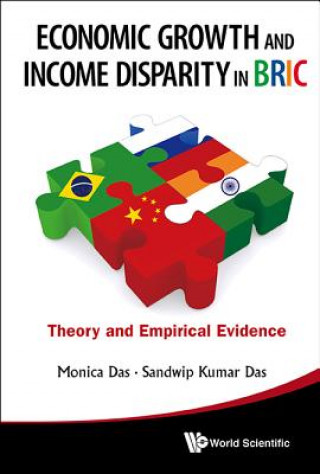
Kód: 01367889
Economic Growth And Income Disparity In Bric: Theory And Empirical Evidence
Autor Monica Das
The recent interest in the development processes of BRIC countries (Brazil, Russia, India and China) has been triggered by their high growth performance. But their political and social background is entirely different. We have tra ... celý popis
- Jazyk:
 Angličtina
Angličtina - Väzba: Pevná
- Počet strán: 168
Nakladateľ: World Scientific Publishing Co Pte Ltd, 2013
- Viac informácií o knihe

Mohlo by sa vám tiež páčiť
-

Corporate Sustainability - Integrating Performance and Reporting
71.69 € -

Fantastic Geometry
17.49 € -5 % -

Physician in English History
28.35 € -

My Little French Kitchen
26.94 € -23 % -
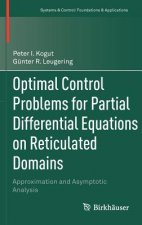
Optimal Control Problems for Partial Differential Equations on Reticulated Domains
137.05 € -

Temperate Fruit Crop Breeding
309 € -

Izba v plameňoch
10.45 € -12 %
Darujte túto knihu ešte dnes
- Objednajte knihu a vyberte Zaslať ako darček.
- Obratom obdržíte darovací poukaz na knihu, ktorý môžete ihneď odovzdať obdarovanému.
- Knihu zašleme na adresu obdarovaného, o nič sa nestaráte.
Viac informácií o knihe Economic Growth And Income Disparity In Bric: Theory And Empirical Evidence
Nákupom získate 275 bodov
 Anotácia knihy
Anotácia knihy
The recent interest in the development processes of BRIC countries (Brazil, Russia, India and China) has been triggered by their high growth performance. But their political and social background is entirely different. We have traced the economic history of BRIC countries to understand their economic and social institutions. The only common theme in this growth story is the high levels of income disparities and poverty that is observed even during the high growth decades. In order to understand the interaction between economic growth, income inequality and poverty, we have developed a theoretical framework that incorporates a mechanism of uniform income transfers in a growth model, where economic growth is the result of accumulation. Income transfer mechanism operates in all countries in the form of a progressive taxation system, pension funds, government's anti-poverty programs, employment guarantee schemes, land reforms, etc. It is not necessarily true that such income transfers would invariably reduce growth rates. The relationship between economic growth and income inequality depends on certain initial conditions. For instance, if the initial distribution of income is fairly unequal, growth induces greater equality. On the other hand, at high levels of per capita incomes, growth may raise inequality if the initial level of inequality is not very high. This brings a new dimension in the 'inverted-U hypothesis'. Based on econometric modeling of growth-inequality nexus, we have looked at the patterns of growth and economic disparities in BRIC countries over long periods of time, including the recent high growth phase. Two inequality measures applied in this study are Gini Coefficient and Theil's entropy measures, depending on data availability. Attempts have been made to identify the sources of inequality and the role of initial conditions in determining the patterns of development. Each country's experience is unique, but the theoretical model goes a long way to explain their growth-inequality experience.
 Parametre knihy
Parametre knihy
Zaradenie knihy Knihy po anglicky Economics, finance, business & management Economics Development economics & emerging economies
109.09 €
- Celý názov: Economic Growth And Income Disparity In Bric: Theory And Empirical Evidence
- Autor: Monica Das
- Jazyk:
 Angličtina
Angličtina - Väzba: Pevná
- Počet strán: 168
- EAN: 9789814415910
- ISBN: 981441591X
- ID: 01367889
- Nakladateľ: World Scientific Publishing Co Pte Ltd
- Hmotnosť: 442 g
- Rozmery: 234 × 151 × 16 mm
- Dátum vydania: 14. November 2013
Obľúbené z iného súdka
-
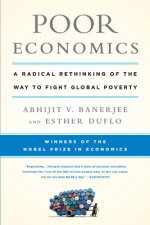
Poor Economics
15.48 € -23 % -

Agile Extension to the BABOK(R) Guide
40.21 € -10 % -
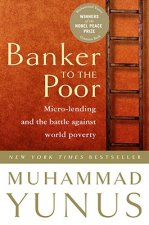
Banker to the Poor
16.28 € -22 % -

Next Convergence
17.79 € -14 % -

Prosperity Paradox
31.26 € -6 % -

Reinventing the Organization
26.94 € -14 % -

Factfulness Illustrated
24.93 € -19 % -

Ecology of Wisdom
12.06 € -23 % -

Introduction to Modern Economic Growth
136.34 € -

How to Spend $50 Billion to Make the World a Better Place
17.89 € -14 % -

Shaping the Future of the Fourth Industrial Revolution
18.39 € -19 % -

Start Something That Matters
13.36 € -19 % -
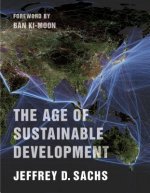
Age of Sustainable Development
38.30 € -15 % -
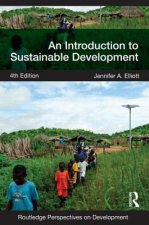
Introduction to Sustainable Development
66.86 € -
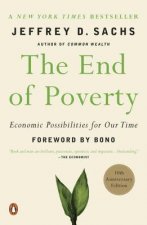
End of Poverty
18.59 € -11 % -

Methods to Analyse Agricultural Commodity Price Volatility
245.65 € -

Finance and Sustainable Development
34.98 € -

Getting Better
25.33 € -

Dubai
35.08 € -

Modern Evolutionary Economics
35.59 € -

China's Resource Diplomacy in Africa
137.05 € -

History of Development
30.66 € -4 % -

Brand Premium
33.78 € -

WTF?
28.65 € -14 % -

Economic Development
107.79 € -

Resurgent Asia
67.66 € -
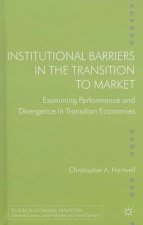
Institutional Barriers in the Transition to Market
137.05 € -

Foreign Aid, War, and Economic Development
46.25 € -
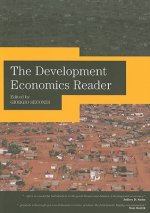
Development Economics Reader
117.64 € -

Transitions to Sustainable Development
217.19 € -

Technological Innovation and Economic Development in Modern Japan
68.87 € -

Living Standards and the Wealth of Nations
15.07 € -

Impact Evaluation in Practice
47.90 € -

War and Economic Development
46.25 € -
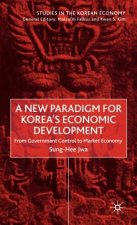
New Paradigm for Korea's Economic Development
137.05 € -

New Paradigm for Korea's Economic Development
137.05 € -

Islam, Authoritarianism, and Underdevelopment
40.61 € -

Zimbabwe's Casino Economy. Extraordinary Measures for Extraordinary Challenges
56.10 € -

Jeffrey Sachs
20.70 € -

ISO 50001 Energy Management Systems
22.01 € -

BRICS
131.12 € -

Poland From Partitions to EU Accession
161.68 € -

Passions and the Interests
21.61 € -1 % -

Wall Street
30.66 € -

The Future of Resilient Finance
140.77 € -

Capitalism with Chinese Characteristics
40.72 € -

Socialist Insecurity
66.56 € -

International Standard Industrial Classification of All Economic Activities (ISIC)
103.06 € -

Green Capitalism. The God that Failed
31.46 €
Osobný odber Bratislava a 2642 dalších
Copyright ©2008-24 najlacnejsie-knihy.sk Všetky práva vyhradenéSúkromieCookies



 21 miliónov titulov
21 miliónov titulov Vrátenie do mesiaca
Vrátenie do mesiaca 02/210 210 99 (8-15.30h)
02/210 210 99 (8-15.30h)